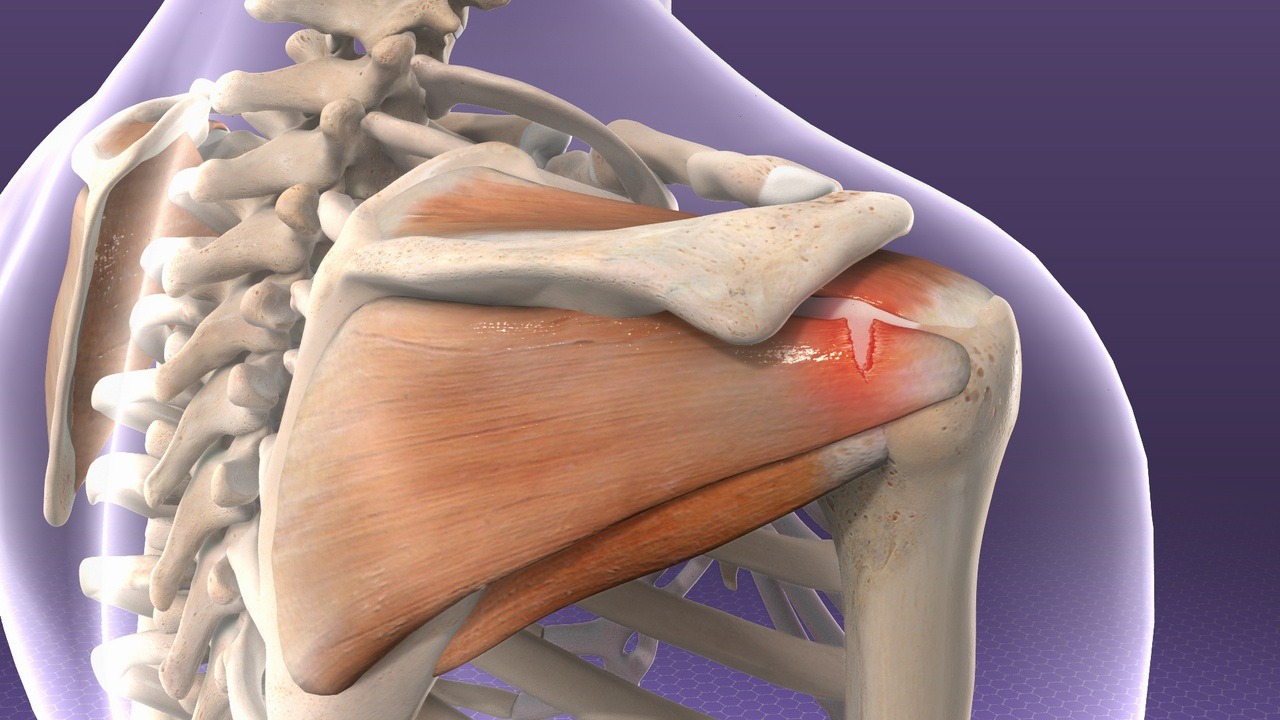- Conditions
- Procedures
- Patient care
- Why choose us
- Our Doctors
- Contact
Rotator Cuff Tear

What is a rotator cuff tear?
In each one of the shoulders, the rotator cuff is a collection of muscles and connective tissue that connects the upper arm to the shoulder blade. As the name implies, the rotator cuff enables the rotation and other intricate mechanics required of the arm during daily movements. Due to the amount of heavy lifting and strenuous movements we place on our shoulders at work or while playing sports, injuries to the rotator cuff such as tears are very common.
Whether you have been diagnosed with a rotator cuff or are seeking more information on potential sources of shoulder pain, please take a moment to review the following guide. If you’d like to learn more or have any questions about our treatment options, don’t hesitate to get in touch with a member of our team.
Common causes of rotator cuff tears
The rotator cuff is made of four muscles and connective tendons that wrap around the upper arm bone, holding it in place to a socket in the shoulder. Since this is a relatively delicate connecting point that handles a fairly heavy stress load on a daily basis, rotator cuff injuries including sprains, strains and tears are a fairly common occurrence.
Tears to the rotator cuff can occur on any of the four muscles and tendons and can be both partial and full. Frequent causes of rotator cuff tears include:
- Falls
- Lifting heavy objects, particularly with a jerking motion
- Repetitive swinging motions, including swinging a golf club or tennis racket
- Natural changes that weaken connective tissue including reduced blood flow and the development of bone spurs
Rotator cuff tears can be both acute, meaning they occur instantly due to excessive trauma, or degenerative, meaning they develop over time due to repetitive motions and natural wear and tear.
Rotator cuff tear symptoms
The most common symptoms of a rotator cuff tear include:
- Pain that is present while not moving the arm, including at night while sleeping
- Sharp pain as a result of lifting the arm or performing specific rotations
- Popping and cracking sensations during certain movements
- Weakness when lifting the arm or performing rotational motions
Since symptoms can be similar to other rotator cuff injuries or even conditions like arthritis, it is important to see a doctor for a full diagnosis. Treating a rotator cuff tear as early as possible during the treatment process can help insure the injury does not worsen and heals properly.
How physicians diagnose a rotator cuff tear
For shoulder pain that is limiting regular activities and does not improve in a short period of time, patients should see a qualified doctor for diagnosis and treatment. To determine if a rotator cuff tear is the primary cause, doctors can perform an evaluation that includes the following steps:
- Ask questions about your specific symptoms and daily activities
- Review your medical and injury history
- Perform a hands-on examination of the shoulder to test for range of motion and identify painful spots
- Order diagnostic tests such as an MRI or X-ray
Upon diagnosis of a rotator cuff tear, doctors will usually recommend rest and conservative treatments to see how the tear heals in all but the most severe cases.
Rotator cuff tear treatment to ensure proper healing
In very many cases, a course of conservative treatment can help relieve pain and improve function without the need for surgery. Effective and often-recommended therapies include:
- Rest and limiting strenuous arm movements
- Use of nonsteroidal anti-inflammatory drugs and over-the-counter pain relievers
- Using alternating hot and cold compression to ease inflammation and relax muscle tension
- Physical therapy to strengthen supporting muscles, improve range of motion and learn safer shoulder mechanics
- Steroid injections to reduce inflammation for periods of weeks and months
Less serious rotator cuff injuries and tears can heal on their own. However, if symptoms do not improve and the tear does not seem to be progressing in the right direction, surgery can become a consideration to restore function and relieve pain.
Exploring rotator cuff tear surgery
Patients who are good candidates for rotator cuff repair surgery have typically experienced pain for a half a year to a year, have a larger tear but good surrounding tissue or are experiencing significant weakness and loss of movement.
Rotator cuff repair procedures involve the surgeon accessing the shoulder and reattaching the tendon to the top of the arm. Due to advances in surgical technology and techniques, these procedures can often be performed on an outpatient basis.
Reach out to the caring team at USA Spine Care today
To learn more about the treatments available at our state-of-the-art facilities to treat rotator cuff tears, please contact us today. We’ll help you understand your options so you can start your journey to relief. Our goal is to help patients get back to a healthy and active lifestyle.
Call toll free 1- 866-249-1627.
